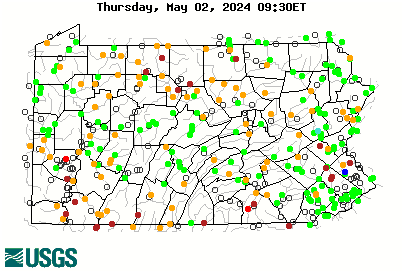tjsingle
Well-known member
Hey guys,
A buddy and me went to see if we couldn’t have some luck on the Lehigh River today at the Glen Onoko access. We have fished many Lehigh tribs but haven’t ever fished the river itself. Flows looked OK based on what we saw for the White Haven (450cfs) and Lehighton (around 800 cfs) gauges, so we decided to give it a shot. We fished large pools, pocket water and riffles from about 9am-230pm with really no bites or fish landed. We fished small nymphs and small streamers. When nymphing on a 9’ leader and probably 1-2’ of tippet and an indicator basically at the fly line we could rarely tick bottom. Probably hiked 2 miles up into the gorge from the lot. Wading was tough due to the cloudy conditions and being unable to see bottom.
Can anyone offer any advice on how to approach fishing the Lehigh?
Thanks
Tom
A buddy and me went to see if we couldn’t have some luck on the Lehigh River today at the Glen Onoko access. We have fished many Lehigh tribs but haven’t ever fished the river itself. Flows looked OK based on what we saw for the White Haven (450cfs) and Lehighton (around 800 cfs) gauges, so we decided to give it a shot. We fished large pools, pocket water and riffles from about 9am-230pm with really no bites or fish landed. We fished small nymphs and small streamers. When nymphing on a 9’ leader and probably 1-2’ of tippet and an indicator basically at the fly line we could rarely tick bottom. Probably hiked 2 miles up into the gorge from the lot. Wading was tough due to the cloudy conditions and being unable to see bottom.
Can anyone offer any advice on how to approach fishing the Lehigh?
Thanks
Tom




